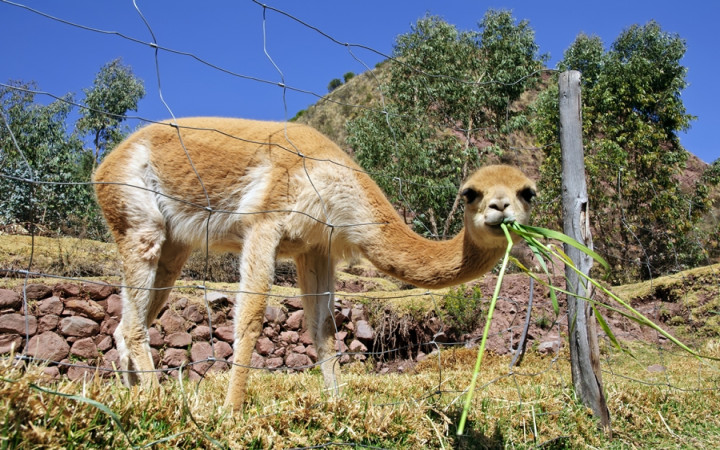Today’s Wonder of the Day was inspired by Wonder Team. Wonder Team Wonders, “What is vicuna?” Thanks for WONDERing with us, Wonder Team!
Have you ever worn clothing made from wool? Perhaps a pair of warm socks? Or a scarf? Maybe even a winter jacket? Many people use wool clothing to keep them warm in cold weather.
Today we’re going to find the rarest, most expensive wool in the world. We’ll need to head to South America, deep into the heart of the Andes Mountains. What rare animal are we searching for? It’s a relative of the llama known as the vicuña!
The vicuña is a type of animal known as a camelid. Some scientists believe it is the ancestor of the modern alpaca. Where can you find a vicuña? They live on the high plains of the Andes Mountains. They can be found in Peru, Argentina, Bolivia, and Chile.
Peru has the world’s largest population of vicuñas. In fact, they’re the nation’s national animal. The vicuña even appears on the Peruvian coat of arms.
Vicuñas are famous for their fine, soft, and warm wool. But they only make about one pound of it per year. The animals can only be shorn about once every three years. And to do so, they must be captured from the wild. This makes their wool very rare and valuable.
The ancient Incas understood the value of vicuña wool. They made it a law that only royalty could wear clothing made from vicuña wool! Vicuñas have been protected by laws since the time of the Incas.
Just how valuable is vicuña wool? Very valuable! Vicuña wool can cost as much as $3,000 per yard. That makes for very expensive garments. A vicuña scarf could cost $1,500, while a coat could exceed $20,000!
In 1974, the vicuña was declared endangered. At that time, there were only about 6,000 of them left in the wild. Since then, scientists have worked hard to protect the animals. Today, they estimate there are well over 350,000 wild vicuñas living in the Andes Mountains.
Vicuña wool is famous for being extremely fine, yet quite warm. The small, hollow fibers are filled with air. They also contain tiny scales. These allow them to interlock easily. That traps air to form an insulating layer below the fibers. Their wool keeps vicuñas warm on the slopes of the Andes Mountains. When used to make clothing, their wool makes soft, warm items.
Shearing vicuñas has been a communal process since the time of the Incas. Entire communities would come together to perform a ritual called chacu. Many people would herd hundreds of thousands of vicuñas into special funnel traps. This allowed them to be shorn and then released back into the wild.
The ancient Incas held spiritual beliefs about vicuñas. They thought the animals were reincarnations of young women who had been given coats of pure gold. This legend and the rarity of vicuña wool lead it to be called the “gold of the Andes.”
Today, the government of Peru officially sanctions chacu. This guarantees that vicuñas are sheared and returned to the wild. However, poaching and illegal shearing are still common. Hopefully one day, the animals can live without threat from people after their valuable wool.
Standards: CCRA.L.3, CCRA.L.6, CCRA.R.1, CCRA.R.2, CCRA.R.4, CCRA.R.10, CCRA.SL.1, CCRA.W.2, CCRA.W.4, CCRA.W.9, CCRA.L.1, CCRA.L.2




